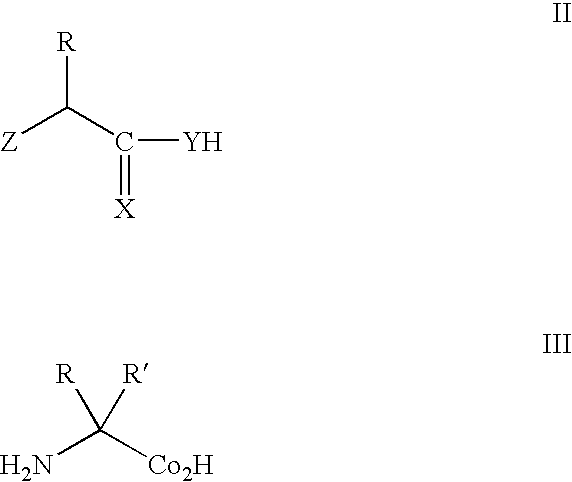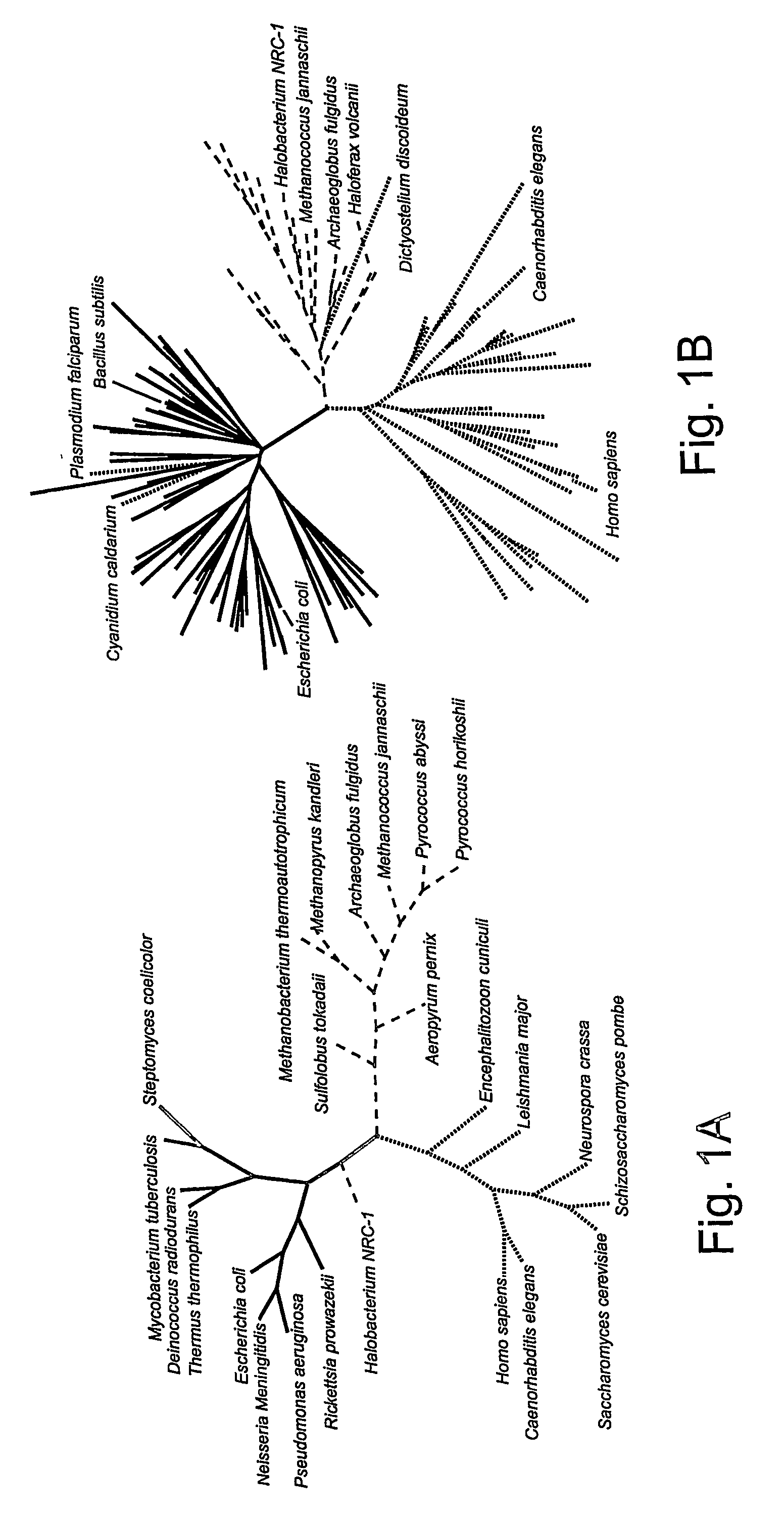Compositions of orthogonal leucyl-trna and aminoacyl-trna synthetase pairs and uses thereof
a technology of aminoacyltrna and leucyltrna, which is applied in the field of translation biochemistry, can solve the problems of difficulty in removing the constraints imposed by the genetic code, and inability to rationally control protein structure and function. , to achieve the effect of suppressing efficiency
- Summary
- Abstract
- Description
- Claims
- Application Information
AI Technical Summary
Benefits of technology
Problems solved by technology
Method used
Image
Examples
example 1
Adaptation of an Orthogonal Archaeal Leucyl-tRNA and Synthetase Pair for Four-Base, Amber, and Opal Suppression
[0182] Recently, it has been shown that an amber suppressor tRNA-aminoacyl tRNA synthetase pair derived from the tyrosyl-tRNA synthetase of Methanococcus jannaschii can be used to genetically encode unnatural amino acids in response to the amber nonsense codon, TAG. This pair is unable to decode either the opal nonsense codon, TGA, or the four-base codon, AGGA. To overcome this, a leucyl-tRNA synthetase from Methanobacterium thermoautotrophicum and leucyl tRNA derived from Halobacterium sp. NRC-1 was adapted as an orthogonal tRNA-synthetase pair in E. coli to decode amber (TAG), opal (TGA) and four-base (AGGA) codons. To improve the efficiency and selectivity of the suppressor tRNA, extensive mutagenesis was performed on the anticodon loop and acceptor stem. The two most significant criteria required for an efficient amber orthogonal suppressor tRNA are a CU(X)XXXAA antico...
example 2
Exemplary Leucyl O-RSs and Leucyl O-tRNAs
[0232] Exemplary O-tRNAs comprise, e.g., SEQ ID NO.:1-7 and 12 (See, Table 3). Exemplary O-RSs include, e.g., SEQ ID NOs.: 15 and 16 (See, Table 3). Exemplary polynucleotides that encode O-RSs or portions thereof include, e.g., SEQ ID NOs.: 13 and 14.
[0233] Further details of the invention, and in particular experimental details, can be found in Anderson, John Christopher, “Pathway Engineering of the Expanding Genetic Code,” Ph.D. Dissertation, The Scripps Research Institute [2003].
[0234] It is understood that the examples and embodiments described herein are for illustrative purposes only and that various modifications or changes in light thereof will be suggested to persons skilled in the art and are to be included within the spirit and purview of this application and scope of the appended claims.
[0235] While the foregoing invention has been described in some detail for purposes of clarity and understanding, it will be clear to one skil...
PUM
 Login to View More
Login to View More Abstract
Description
Claims
Application Information
 Login to View More
Login to View More - R&D
- Intellectual Property
- Life Sciences
- Materials
- Tech Scout
- Unparalleled Data Quality
- Higher Quality Content
- 60% Fewer Hallucinations
Browse by: Latest US Patents, China's latest patents, Technical Efficacy Thesaurus, Application Domain, Technology Topic, Popular Technical Reports.
© 2025 PatSnap. All rights reserved.Legal|Privacy policy|Modern Slavery Act Transparency Statement|Sitemap|About US| Contact US: help@patsnap.com



